In a relatively short time we have gone from using incandescent bulbs to more efficient and versatile solutions such as LED lights. Among these innovations, Dim to Warm technology appears as a solution that combines efficiency on the one hand and the ability to create cozy environments on the other.
- What is Dim to Warm?
- How Dim to Warm technology works
- Advantages of Dim to Warm Lighting
- Practical applications of Dim to Warm
- Comparison: Dim to Warm vs. Tunable White
- Types of Luminaires with Dim to Warm Technology
- Dim to Warm Installation and Compatibility
- Impact on Energy Savings.
- Interior design with Dim to Warm lights
- Conclusion and Final Recommendations
Dim to Warm technology allows LED lights to change their color temperature as their intensity is reduced. In essence, it replicates what used to happen with incandescent bulbs. Let’s see what this technology is, how it works, its advantages, applications and some considerations for its correct use.
What is Dim to Warm?
Dim to Warm is an LED lighting technology that allows the color temperature of the light emitted to be varied as its intensity is adjusted. In practical terms, this means that as the intensity of the light decreases, its hue becomes warmer, going from a neutral or cool white to more yellow or orange tones.
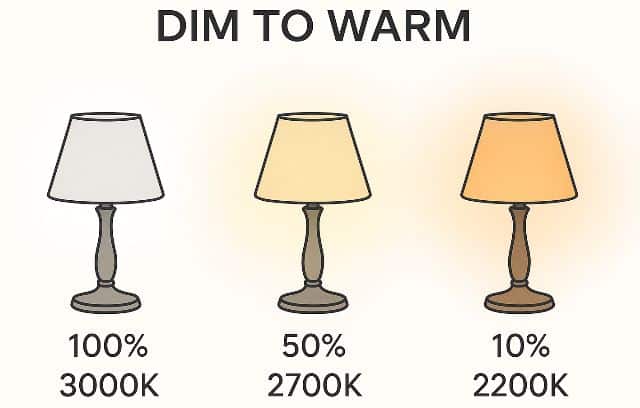
This functionality seeks to replicate the behavior of traditional incandescent bulbs, which naturally emitted a warmer light when dimmed. By achieving this effect using LED technology, we combined energy efficiency with the warmth and sense of comfort offered by incandescent lights.
How Dim to Warm technology works
By adjusting the electrical current that feeds the LEDs, we control both the intensity and the color temperature of the light emitted. As mentioned above, as the current is reduced, not only does the brightness decrease, but the spectral composition of the light also changes, resulting in a warmer hue.
This process is achieved by using LEDs of different color temperatures in the same luminaire, combining their light emission in a controlled manner to obtain the desired effect. For example, at maximum brightness, the light can have a color temperature of 3000K (warm white), and at minimum brightness, it can go down to 1800K (candle-like light).
This type of implementation keeps the CRI constant ensuring accurate color rendering. In addition, Dim to Warm technology is compatible with control protocols that allow advanced digital management of lighting systems.
Advantages of Dim to Warm Lighting
The implementation of Dim to Warm technology in lighting systems offers multiple benefits both aesthetically and functionally.
- Customization: It allows to adapt the lighting to different times of the day or activities.
- Efficiency: By using LED technology, low energy consumption is maintained, even when varying the intensity and hue of the light.
- Control: It is compatible with various lighting control systems, facilitating its integration in automation and home automation projects.
- Useful life: The LEDs used in Dim to Warm luminaires have a long useful life, reducing the need for frequent maintenance and replacement.
These advantages make Dim to Warm technology an attractive option for a wide variety of applications, from residences to commercial and hospitality spaces.
Practical applications of Dim to Warm
The versatility of Dim to Warm technology makes it suitable for a variety of applications, adapting to the specific needs of each environment.
- Homes: In living rooms, bedrooms and dining rooms, it allows creating warm and relaxing environments, ideal for moments of rest or family gatherings.
- Restaurants and Bars: It contributes to establish a cozy and attractive atmosphere for customers, improving their experience and perception of the space.
- Hotels: In rooms and common areas, it provides adaptable lighting that can be adjusted according to the time of day.
Recommended products
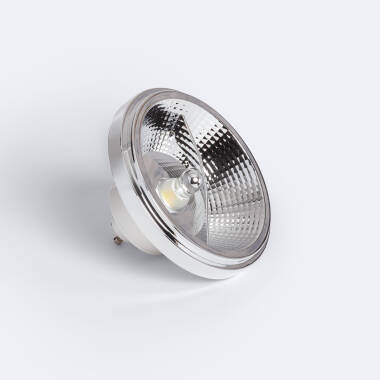
In Stock, delivery in 24/48h
7.29 £
GU10 AR111S Dimmable Dim To Warm LED Bulb 12W 24º 800 lm
View product
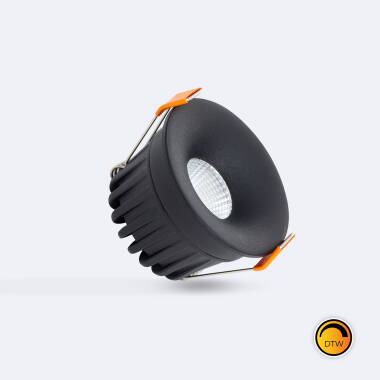
In Stock, delivery in 24/48h
9.19 £
Round Dimmable 4W LED Downlight Ø45mm MINI Dim to Warm
View product
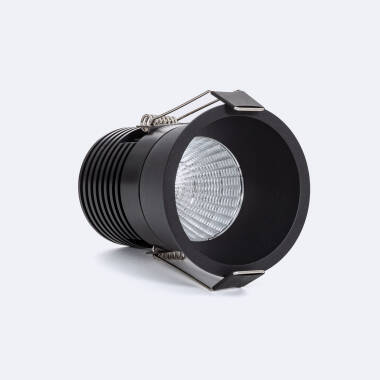
In Stock, delivery in 24/48h
13.99 £
Round Dimmable 12W LED Downlight Ø65mm MINI Dim to Warm
View product
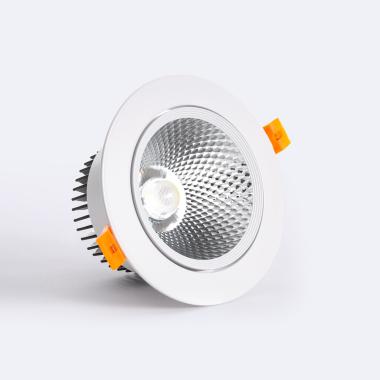
In Stock, delivery in 24/48h
14.79 £
Round 15W Dimmable LED Downlight Ø110mm Cut Out Dim To Warm
View product
Comparison: Dim to Warm vs. Tunable White
Dim to Warm technology is often confused with Tunable White, but although both allow color temperature to be modified, they have different approaches and objectives.
Dim to Warm is primarily designed to simulate the effect of classic incandescent bulbs. Its color range moves from a warm white (e.g. 3000K) to a very warm or orange white (1800K) as the light intensity decreases. This change is automatic and directly linked to the dimming level. That is, the more the light is reduced, the warmer it becomes. Ideal for relaxed environments such as living rooms, bedrooms or restaurants.
Tunable White, on the other hand, offers independent control of both light intensity and color temperature. This means that you can have warm or cool bright light as desired, without having to change the intensity. It typically ranges from 2700K (warm) to 6500K (cool), making it ideal for offices, schools and hospitals, where light needs to be adjusted depending on activity or time of day.
Types of Luminaires with Dim to Warm Technology
Dim to Warm technology has been integrated into a wide variety of LED luminaires available on the market, adapting to both residential and commercial installations:
- Recessed spotlights.
- LED strips.
- Pendant and table lamps.
- Architectural luminaires.
The diversity of formats allows the application of this technology in almost any type of project, raising the quality of the environment and providing control over the user’s visual experience.
Dim to Warm Installation and Compatibility
One of the strengths of Dim to Warm technology is its ease of integration into existing lighting systems, provided certain conditions are met.
Dimmer compatibility: Not all dimmers work with Dim to Warm systems. It is crucial to use LED compatible models otherwise flickering, buzzing or poor color control may occur.
Intelligent control systems: In professional or home automation environments, Dim to Warm is commonly controlled with protocols such as DALI or DMX. These allow for more precise color and intensity management, which is useful in environments where smooth, timed transitions are sought.
Support for intelligent assistants: Some lighting solutions with Dim to Warm technology are compatible with assistants such as Alexa, Google Home or Zigbee systems, enabling voice control and integration with smart lighting routines.
Impact on Energy Savings.
Although the main advantage of Dim to Warm is usually associated with visual comfort, its use also brings significant energy benefits.
Rational use of light: By allowing the light intensity to be dimmed, consumption is reduced compared to a lighting system that always operates at 100%. For example, a luminaire that is normally at full output can be kept at 40-60% at many times of the day without compromising functionality.
High efficiency: Luminaires with Dim to Warm technology are still LED, so they consume much less than incandescent and halogen, even when they are emitting more light.
Less over-illumination: Thanks to adaptive control, overexposure is avoided, which not only saves energy but also improves visual comfort and reduces eye fatigue.
Long service life: Another savings factor is the service life of the luminaires. By operating below their rated wattage for longer, LED life is extended, reducing replacement and maintenance costs.
Interior design with Dim to Warm lights
Modern interior design seeks to integrate light as an active element in the ambiance of the space and Dim to Warm offers unique tools to achieve this.
Creating atmospheres: Changing the color temperature according to the activity (reading, dining, relaxing) allows the same space to have multiple functionalities. This is especially important in small homes where zones are multifunctional.
Integration with materials and colors: Warm light at low intensity can enhance tones of wood, natural stone and textiles, creating an intimate and sophisticated effect. Designers take advantage of this ability to play with textures and create visual depth.
Zoning: “Zones of light” can be defined within a room using Dim to Warm luminaires, separating work areas from sleeping areas. This is especially useful in open spaces such as lofts or studios.
Conclusion and Final Recommendations
Dim to Warm technology offers a modern, efficient and attractive alternative to traditional lighting. It combines the best of LED with the charm of incandescent bulbs.
Whether for the home or professional spaces, Dim to Warm allows you to transform environments by simply adjusting the light. If you are looking for a solution that allows you to play with light and adapt it to every moment of the day, this is a technology to consider.
From its ease of use, durability, energy efficiency and compatibility with intelligent systems, there is no doubt that Dim to Warm represents the present and future of lighting design.


